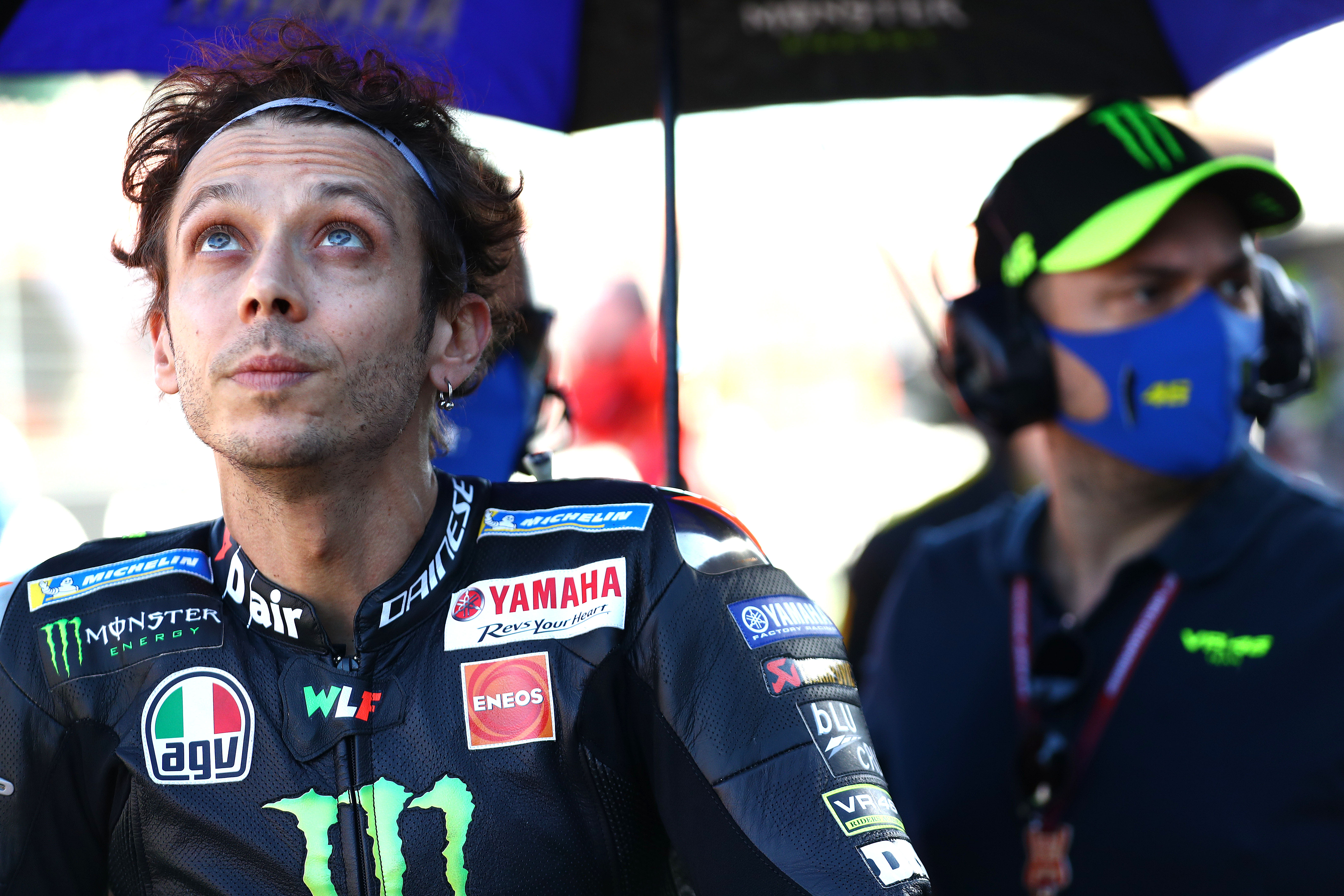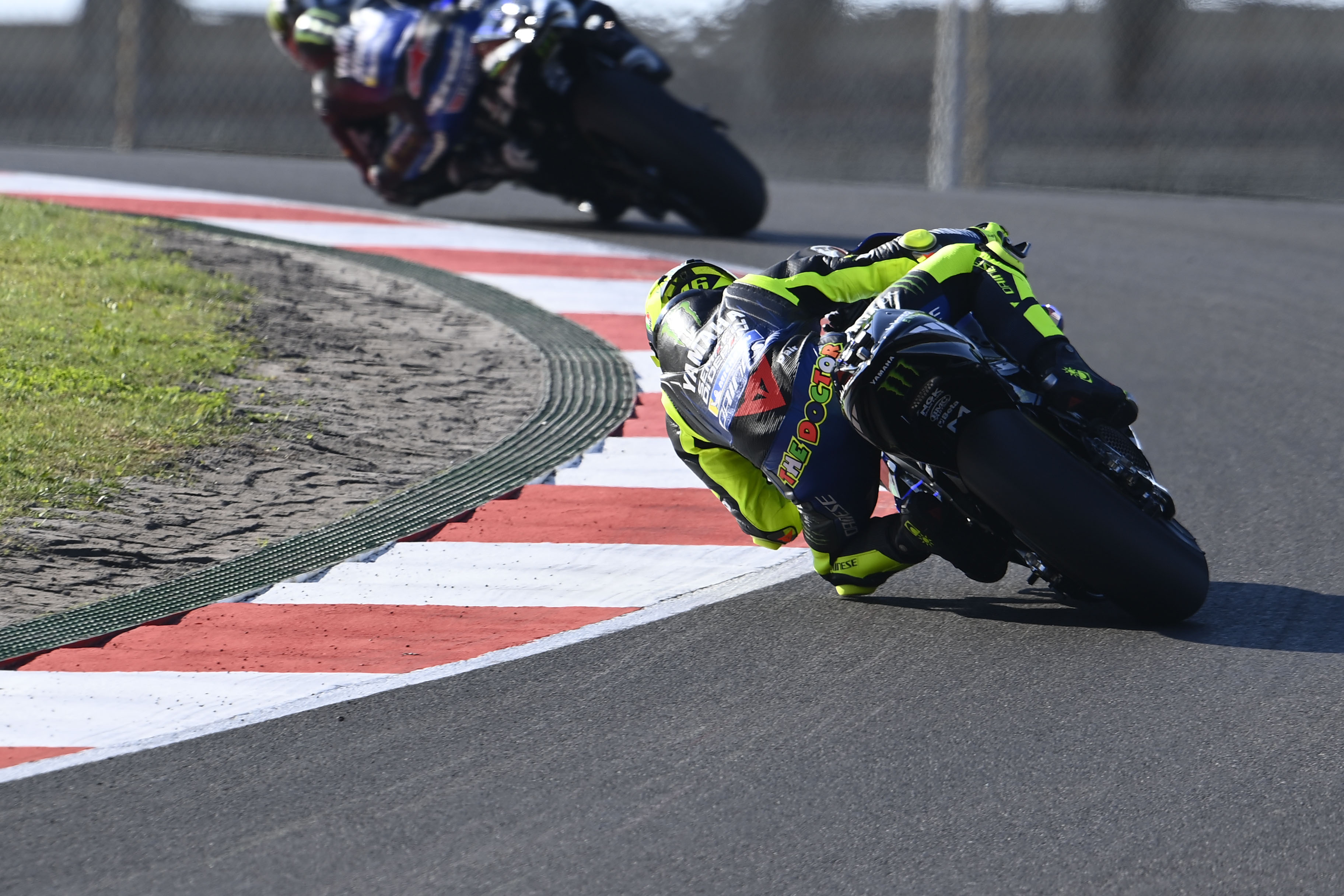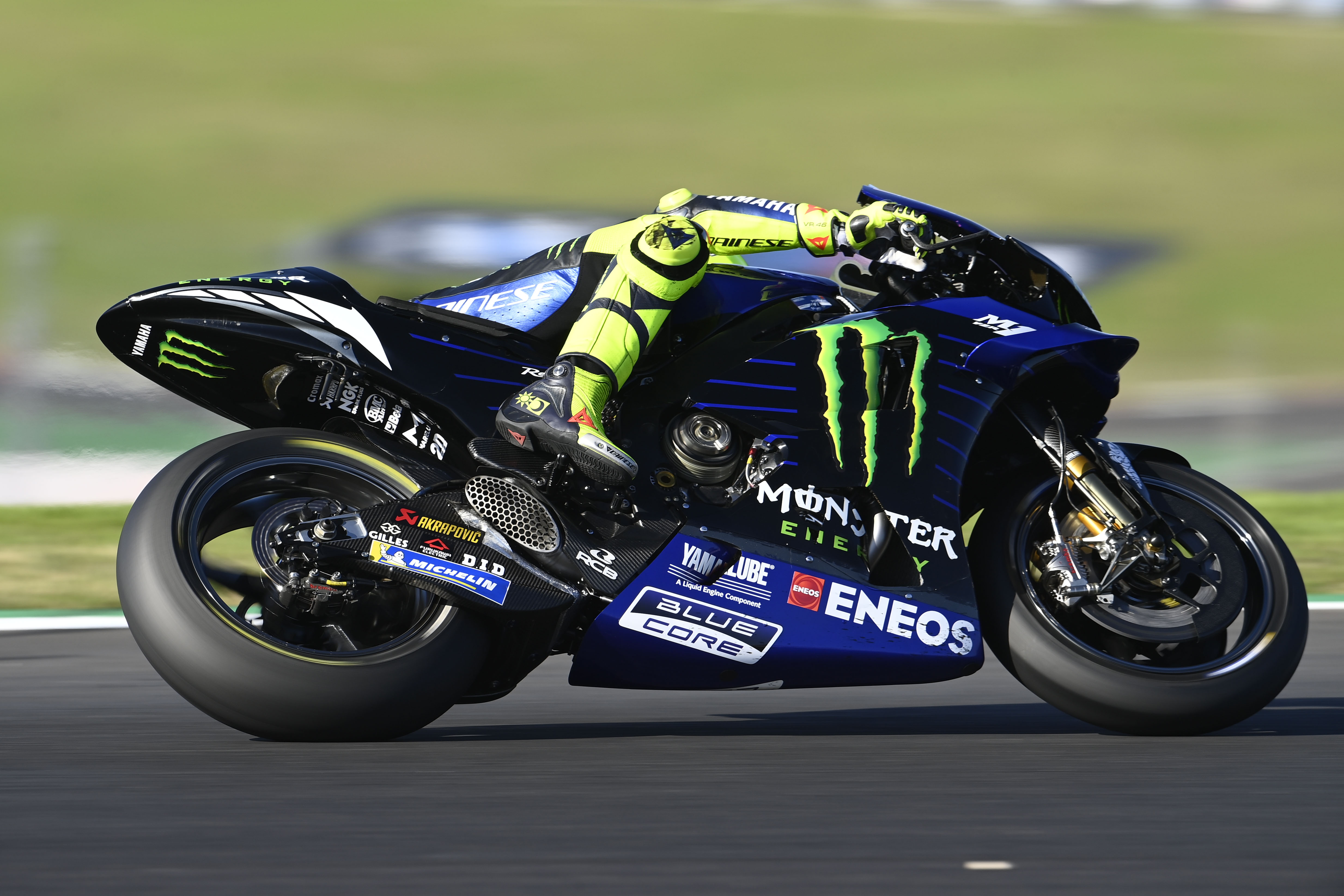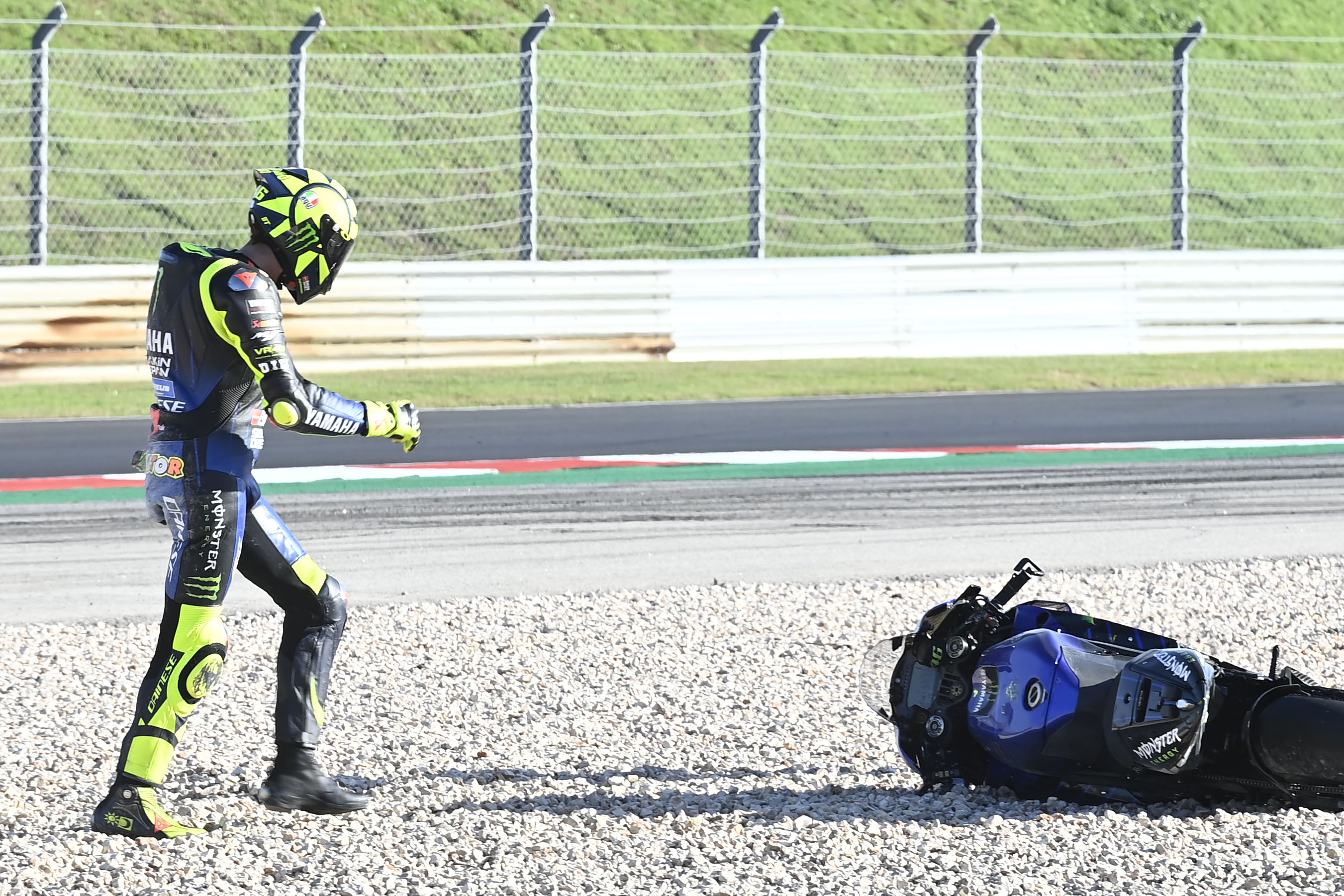It’s hard to imagine a worse situation for nine-time world champion Valentino Rossi to have found himself in than where he ended the 2020 MotoGP season, in his last year as a Yamaha factory rider before his switch to the Petronas SRT satellite squad.
With MotoGP’s most famous rider 15th in the championship with just a single podium and a streak of six races with no points, it’s fair to say that the year was an unmitigated disaster.
It was his worst finishing position in 24 years as a grand prix racer, and there are a whole host of factors that explain why the season went awry. The net result was a year that Rossi will be quick to forget.
1. COVID-19
Obviously no recap of Rossi’s season can be made without mentioning the coronavirus pandemic, so let’s get it out of the way early on. Rossi was among the worst-affected on the MotoGP grid by the virus, contracting it between races in France and Spain and missing two rounds of the championship at Aragon.
One of the rare few in the paddock who not just tested positive but also showed symptoms, Rossi lost valuable momentum just when he needed to regain it after a trio of prior DNFs at Misano, Barcelona and Le Mans.

As Rossi’s never particularly been a fan of the Motorland Aragon circuit anyway, the two races there may not have been his best chance of finding form this year.
But in an intense season where every minute on track was important for data collection as Yamaha looked to make improvements, it nonetheless impacted his year.
He was triply unlucky at Valencia, too, when what appears to have been a false positive test took him out of commission on the first day of practice. An excellent opportunity for American Garrett Gerloff to show himself on a world stage, it was yet more time missed for Rossi when he needed it the most.
2. The Yamaha M1

To put it mildly, 2020 was a disaster for Yamaha. After starting off the year looking strong with back-to-back wins at Jerez for Petronas satellite team rider Fabio Quartararo, it all went downhill from there and the season was saved only by a strong late flourish and second place in the championship for Franco Morbidelli – on last year’s bike…
Rossi was no more exempt from that than Quartararo or Maverick Vinales, suffering from grip issues that left him unable to be anywhere near as competitive as he wanted.
Yamaha’s old problems, which were believed to be fixed over the winter by Rossi and Vinales, quickly re-emerged, meaning that if track conditions were less than ideal, he was nowhere.
Rossi showed that it was largely the bike and not the rider on occasion, too, like his podium in the second race of the year at a red hot and newly-resurfaced Jerez circuit, but while the team continues to be in difficulty elsewhere, so will Rossi.
That’s something Yamaha is going to have to work hard to fix over winter, too, if Rossi aims to come back stronger next year. With the team unable to modify the engine thanks to new money-saving regulations, the answer will have to come from electronics and chassis design, no doubt prompting a busy off-season and key winter tests for the riders.
3. The 2020 Calendar
Linked to the M1’s issues was the 2020 calendar, which led to many tracks (especially ‘traditional’ Yamaha ones) either cut from the schedule or run at completely different times of year due to the pandemic, affecting the conditions.
Grip, or a lack thereof, seems to affect different bikes in different ways. Yamaha is almost unstoppable when there’s lots of grip, and when there’s a limited amount it’s nowhere – and that second situation is exactly what the calendar threw up more often than not.

Le Mans and Aragon in October instead of in May and September respectively, Jerez at the height of the Andalucian summer in July and Barcelona three months later than usual made for changing characteristics at tracks where the M1 should have been fast, and Rossi struggled alongside his stablemates.
Even worse for Rossi, he lost out on the chance to shine at his favourite tracks. Gone were Silverstone, Phillip Island, Mugello and (for the first time in MotoGP’s 71-year history) Assen, replaced with back-to-back races at places he’s not particularly a fan of like Valencia and the Red Bull Ring.
4. Engines and ‘valvegate’
By now one of the most talked-about subjects of the season, Yamaha’s engine failures at the opening round and subsequent restrictions were a key factor in Rossi’s poor performance too, both by docking him valuable points early on and then by putting a dampener on the rest of his season.
He was the first rider to suffer a problem in a race, failing to finish round one in Jerez when an engine warning light came on and forced him to pull over. A consequence of a new batch of weaker valves installed by Yamaha into its 2020 engines, it led to the manufacturer being docked a considerable number of points for making an illegal modification to the supposedly-sealed powerplants.
It also meant that restrictions had to be put in place for the rest of the year to coax three engines into completing 13 races – no mean feat when each normally only lasts three rounds. It was a testament to the actual reliability of its engines (valve issues aside).
RPM restrictions in the name of reliability zapped Rossi’s horsepower further, making it tricky to make a pass in a straight line, that translated into more risky overtakes and pushing harder to maintain corner speed. It might well be why he fell four races in a row.
5. His fading ability?
It’s not something that the legions of yellow fans want to think about, but it remains a fact: Valentino Rossi is 41 years old and is past his prime. He’s now (with the absence of Andrea Dovizioso and Cal Crutchlow) 10 years older than the second-oldest rider on the grid, and while he might still be incredibly fast, he’s not as fast as he once was.

Ask any retired racer and they might admit to it. Your eyesight isn’t as sharp, your motor skills not quite as inch-perfect as they once were. It’s not enough to call for Rossi not to have a spot on the grid, but it means that his days of being a guaranteed podium finisher are in the past.
6. The opposition
In partnership with Rossi’s age comes the increasingly young bunch of rivals he’s competing against. He’s old enough to be the father of half of the grid – he’s double Quartararo’s age, for example – Rossi’s rivals are young, hungry and perhaps more willing to push to the limit.
That’s never been more apparent in 2020, either, with this season heralding something of a changing of the guard. Gone are the guys who grew up racing against Rossi; the likes of Casey Stoner and Dani Pedrosa, replaced with a new crop young enough that those were the people they hero-worshipped in their youth rather than wanted to beat.
No bad thing for the sport given that there will be a time after Rossi, it has nonetheless meant that he’s got an even tougher time ahead of him unless Yamaha manage to work some magic to fix the bike’s issues for 2021.







